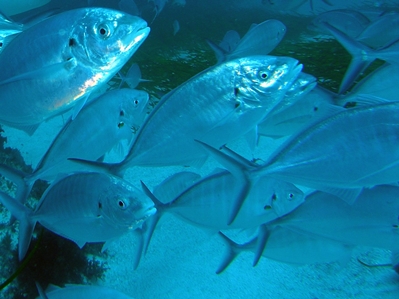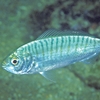General Description
Body deep, oval, compressed, tail base very slender; pectoral fins long, slender, scythe-like; rear of lateral line with enlarged bony scales; hind margin of upper jaw angled forwards. Steely blue, silvery below, with a distinct small black spot on the upper margin of the gill cover; juveniles with narrow grey bands on sides without mid-lateral yellow stripe. Long confused with Pseudocaranx goergianus. To 25 cm.
Biology
This species is taken in considerable numbers by prawn trawlers along the South Australian coast. Juveniles usually form large schools.
Habitat
Coastal waters and bays, often near rocky areas, to depth of 30 m.
Reefs
Open water
Distribution guide
Southern Australia.
Species Group
Fishes › Trevallies and allies
Depth
Water Column
Max Size
25 cm
Commercial Species
No
Global Dispersal
Native to Australia
Conservation Status
- DSE Advisory List : Not listed
- EPBC Act 1999 : Not listed
- IUCN Red List : Not listed





